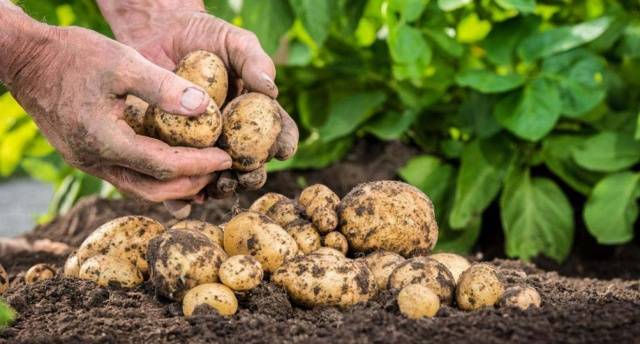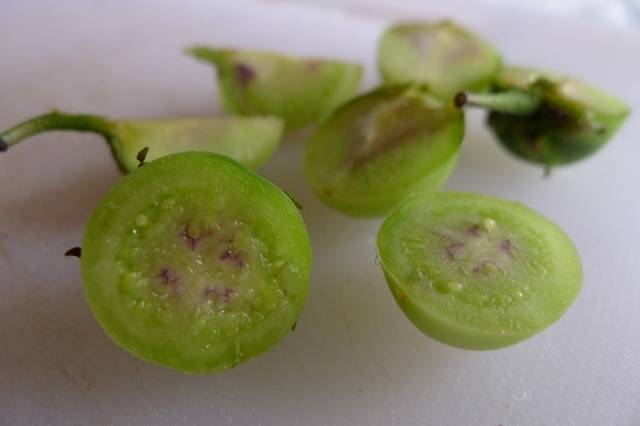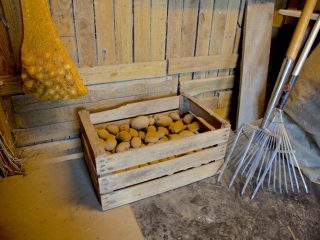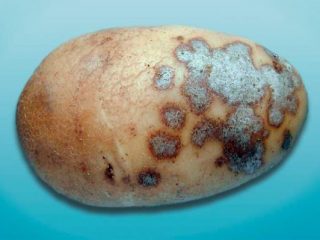Content
Every gardener knows that potatoes reproduce by tubers. However, this is far from the only way; for example, potatoes can also be planted with seeds. Summer residents are not surprised by sowing tomato or pepper seeds, but growing potatoes in seedlings is an unusual process for ordinary gardeners. Breeders develop new potato varieties through seeds; this method helps save on planting material and prevent crop degeneration. At first glance, it may seem that seed propagation is an overly complicated method. But as practice shows, even at home it is possible to grow any variety of potato from seeds.
This article will be devoted to how to grow potatoes from seeds. Here the advantages and disadvantages of seed propagation will be listed, it will be discussed when and how to sow potato seeds for seedlings, and transfer seedlings to the ground.
Features of seed propagation
When growing potatoes at home, the following agricultural technology is common: planting tubers are buried in the ground in order to dig up a new crop at the end of the season. This sequence of actions is repeated from year to year.
This method of propagating potatoes has significant disadvantages:
- potatoes degenerate every year, losing their varietal qualities;
- infections and pests accumulate in tubers;
- tubers from each subsequent harvest become smaller, and their number under the bush decreases.
Advantages and disadvantages
Planting potatoes with seeds solves all these problems, but also has its own characteristics. Having decided to sow potato seeds, the farmer opens up new opportunities for himself: he will be able to independently cull breeding material and select tubers with certain varietal qualities for propagation.
Propagation of potatoes by seeds is also justified for the following reasons:
- the cost of seeds is several times less than the cost of planting tubers - this allows you to grow elite and rare varieties at a low price;
- cellars, basements and storage rooms are not needed to store planting material - potato seeds will overwinter well in a matchbox;
- Initially, the potato seeds are not infected with any diseases or pests - the harvest from them will be “clean”, and there will be no need to treat the bushes with chemicals;
- seed tubers are much more resistant to unfavorable climate and weather conditions - potatoes from seeds quickly adapt to the conditions of a particular growing region;
- The germination of potato seeds remains for several years;
- higher quality and greater quantity of harvest - in the first years after planting the seed tubers, the potatoes will be the largest, very tasty, and, most importantly, there will be a lot of them.
If growing potatoes from seeds had only advantages, all gardeners would switch to this method. Not everything is so smooth, and seedling propagation has its disadvantages:
- bushes and tubers from the same seeds can grow completely different - it will not be possible to obtain the same type of planting material, you will need to independently select specimens for further propagation;
- in the Russian climate, potato seeds cannot be sown in open ground - seedlings have to be grown;
- potato seedlings are very capricious and fragile - to get your own elite tubers, you will have to work hard;
- two-year cycle - to obtain normal planting tubers, it will take several seasons (in the first year after planting potato seedlings, sets are collected - tubers weighing 4-6 grams).
Despite the difficulties, planting potatoes with seeds for seedlings is a promising activity. If a farmer has free time, suitable conditions and a desire for selection, he should definitely try it!
Growing technology
Growing potatoes from seeds at home is a difficult and rather painstaking process. A beginner will have to face some difficulties:
- Potato roots are weak and develop very slowly, so you need to sow the seeds in loose soil. At first, you can grow potatoes in sawdust, and later transfer the seedlings to the soil.
- Potato seedlings are quite capricious; they are sensitive to any external changes. In this regard, it is recommended to maintain the same temperature, humidity and light in the room with seedlings.
- Due to lack of light, potato seedlings become very elongated - artificial supplementary lighting will be required.
- Tender potato seedlings are susceptible to various fungal diseases; seedlings are especially often affected by “black leg”. To protect potatoes, they should be treated with fungicidal preparations from the first days of “life” (Trichodermin, Planriz, black yeast).
- Potato seedlings are very small and fragile, so they will have to be replanted with great care.
Preparatory work
You can buy potato seeds in special stores. Such planting material goes through all stages of preparation and is completely ready for sowing. Buying potato seeds is justified when a gardener wants to introduce a new variety on his plot. In other cases, you can get seeds from your own harvest.
Potato fruits are picked from the upper green part of the bush. After collection, they are placed in a bag and hung in a warm, bright place. During the ripening process, the berries should turn white and become softer - now they can be crushed and the seeds extracted. Small potato seeds are washed with water, dried thoroughly and placed in a paper bag.
Immediately before planting, potato seeds must be soaked in water or a growth stimulant. The fact is that the germination rate of potato seeds is very low - not all seeds will hatch and sprout. Soaking should be carried out for at least two days until it becomes clear which specimens are sprouting.
Sowing potatoes
The timing of planting potato seeds is very early - you can start sowing already at the end of March. Planting is done in wooden boxes filled with moist substrate. The soil for potatoes must be very loose, so it is prepared from one part of turf soil and four parts of peat. The soil must be fertilized with a mineral complex and watered thoroughly.
Potato seeds that have begun to hatch are placed in boxes in even rows. Planting scheme not very dense: 5x10 cm. If potato seedlings grow too dense, they will not have enough moisture and nutrition. It is recommended to lightly press the seeds spread on the ground and sprinkle them with a thin layer of dry sand (0.5 cm is enough).
When a pair of leaves appears on the potato seedlings, they will need to be planted in individual containers with drainage holes or in peat cups. Caring for potato seedlings is simple: regular loosening of the soil, watering, fertilizing with ammonium nitrate at the rooting stage of the seedlings.
Planting seedlings in the ground
At the end of May, when the threat of return frosts has passed, potatoes from seeds can be transferred to the ground. Potato seedlings have very thin and weak roots, which are easily damaged during the transplanting process. Therefore, seedlings are planted only in loose soil and done so very carefully. As a result, some plants will not take root and will die - the farmer must be prepared for this.
Despite the small size of potato seedlings, the planting pattern should be 35x70 cm. A week before planting in open ground, seedlings must be fed with nitrogen (you can use urea - 30 grams are dissolved in a bucket of water and the seedlings are watered).
Planting is done deep, because potatoes from seeds are afraid of the cold. The depth of the holes should be 10 cm. It is recommended to add a handful of humus to each hole and pour 0.5-1 liter of water.
Review
Conclusion
It is quite possible to get seed potatoes from seeds at home! This is confirmed by reviews of domestic gardeners who successfully propagate valuable varieties and even develop new types of potatoes. Of course, the process of growing seedlings, picking them and transplanting them into the ground is a long and troublesome process. But in the end, the farmer will receive his own elite potatoes, the seeds of which cost a lot of money on the market.
More information about planting potatoes from seeds is described in this video:





















